A few years ago I upgraded my backpacking gear and spent a few weeks on the John Muir trail. Though I’d certainly done long weekend backpacking trips, it was the first time I’d spent an extended length of time in the backcountry on my own and I carried a lot because I had no idea what to expect. The experience was so incredible to me that I couldn’t wait to do more.
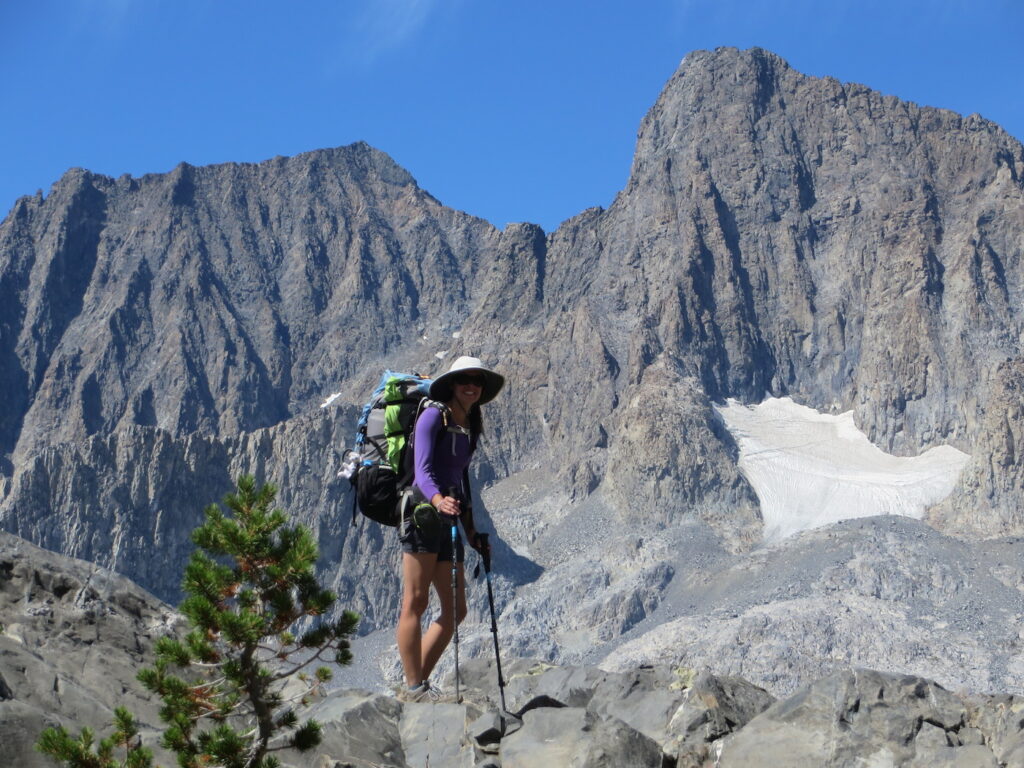
The only problem? Since those trips in 2015, rheumatoid arthritis has made my body crankier and though I can still travel relatively far and fast, my joints just don’t appreciate trail running or the extra weight of long distance backpacking. I can live without trail running I suppose. Ok, maaaaaybe I’m still learning that trick, but I definitely can’t live without backpacking.
This past year I put in a lot of effort into getting my backpack weight lower to reduce load on my joints without compromising comfort and safety. Let me be the first to say that I’m no hyperlight backpacking guru and my goal isn’t to achieve a hyperlight, superultralight or ultralight badge. Backpackers can get really deep into labels and while many forgo hot meals, tents, and sleeping pads to achieve that superultralight status, it’s just not my thing. While I’m incredibly low-maintenance and simple, a hot meal and a morning cup of coffee are non-negotiable to me and as a frequent solo backpacker, I need to carry enough gear to be safe and 100% self sufficient.
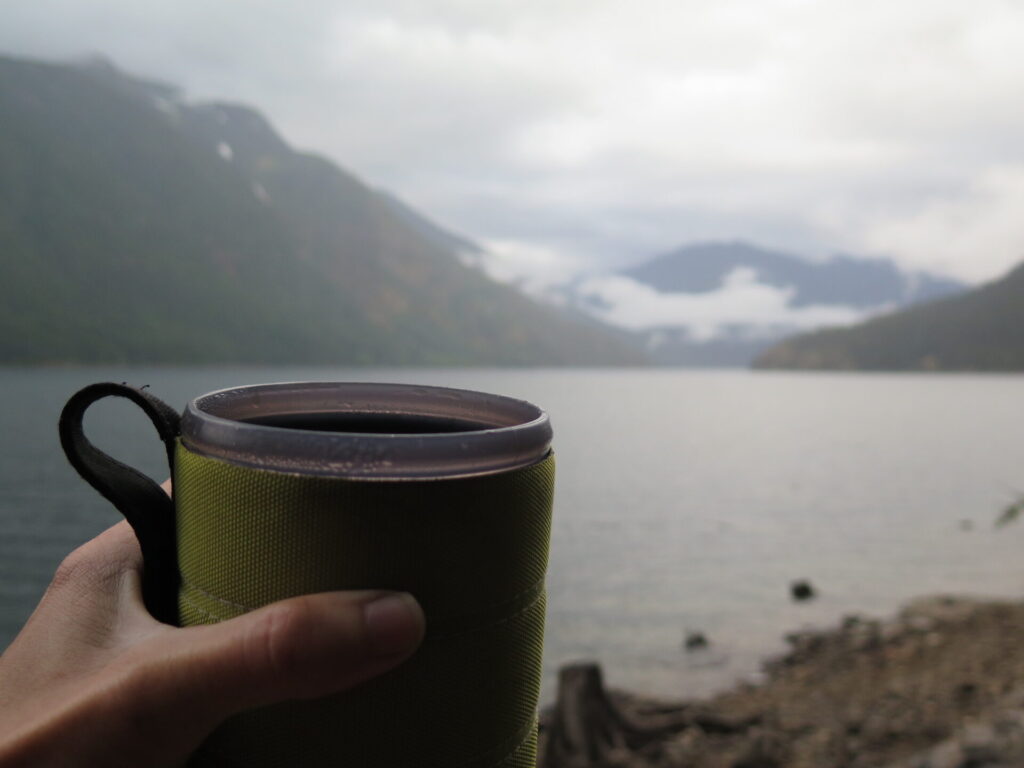
I wanted to try something new, so last year I purchased an Ultimate Direction Fastpack 35 and took a long, hard look at my gear. I feel like backpacking is a bit like living in a large house, if you have the space, you’ll fill it, but when forced to downsize, you make some decisions.
After a lot of trial and error, I’ve managed to get my total pack weight down to around 20ish pounds, +- 5 pounds in either direction based on weather conditions, trip length, etc, etc. I managed to do a single night 30 mile round trip overnight at Miner’s Ridge last year with a 15 pound pack. It didn’t even feel like backpacking! Last month I finished a 3-day/2-night 45 mile loop in the Glacier Peak Wilderness with 20 pounds that included my Nikon camera and a 300mm zoom lens as well as a tent, sleeping bag, pad, hot food, and all the fixings!
Caveat: both of these trips had super favorable weather windows.
A few people have asked me about my setup and that’s what motivated me to catalog my gear, weigh it all, and write this article. Purists are only going to ask “but what is your base weight!?” In base weight terms, I’m at about 10-12 pounds depending on the weather and trip length, but the whole base weight conversation makes me crazy and I think it’s a number that too many backpacking geeks focus on.
Sure, it makes sense to discuss, many backpacking items are consumable and variable. But honestly? Who cares if your base weight is 6 pounds if you find a way to add another 20 pounds of stuff? Ultimately, I care about how much my entire pack weighs, not just my base.
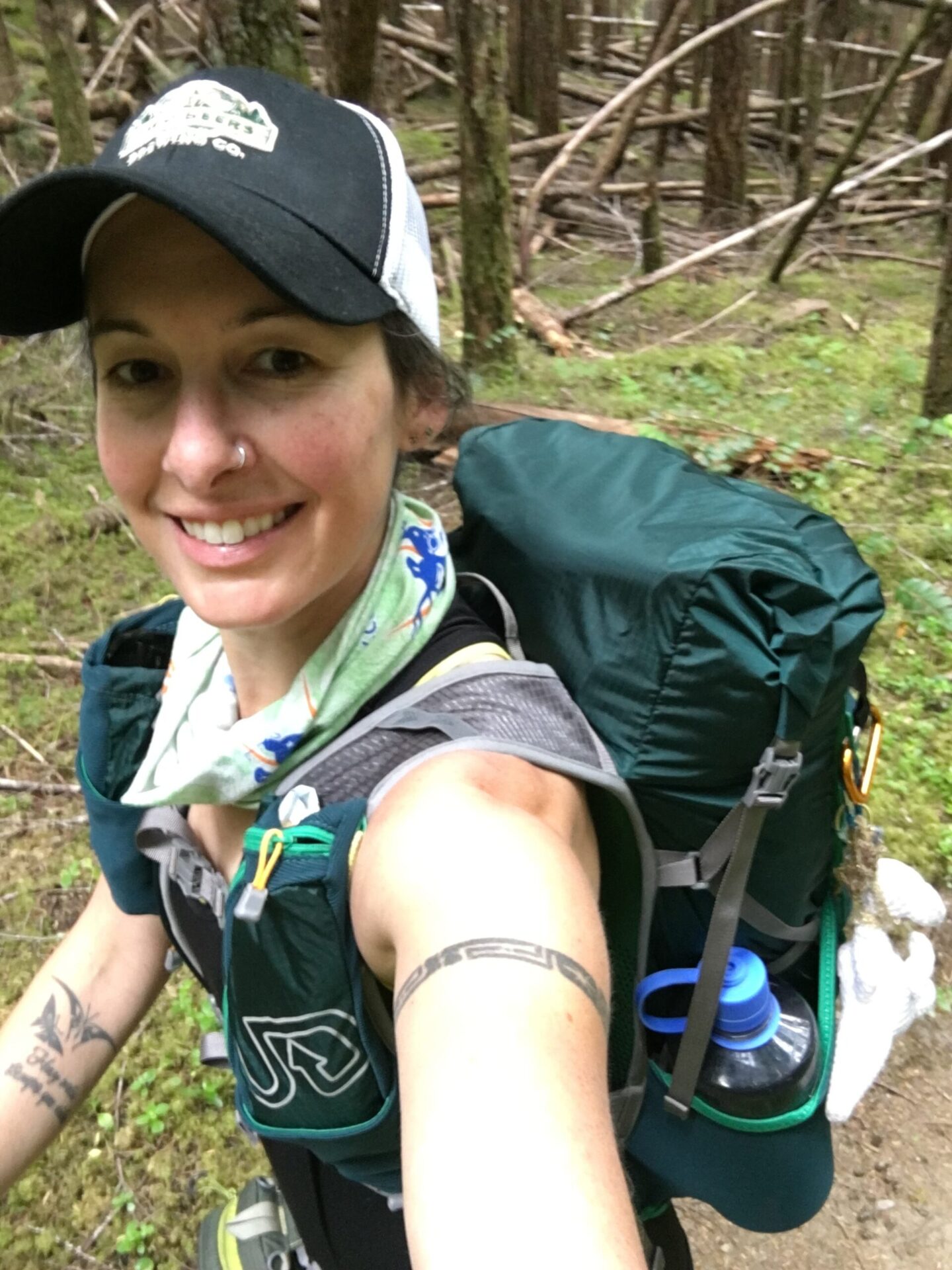
What I’ve learned is that going lighter is less about sacrificing and more about smart gear choices and yeah, a willingness to spend a little extra $$ where it really counts. It also takes a bit of creativity with lighter, calorie-packed food and a lot of luck with the weather.
If you’re trying to lighten your backpacking load, know that it takes some time to find the perfect setup that works for you. This list might give you a few ideas of where to start, and it might also give you an opinion on what I’m doing “wrong”, but this is what works for me, it’s not the Bible! What matters to me at the end of the day is carrying a weight my joints can live with while being safe and happy. That’s a good goal for anyone!
My Ultimate Direction Fastpack Setup.
This is my lightest setup and it’s fantastic for 2-3 day trips in great weather when I don’t need a bear canister. I can fit my BearVault 450 into my UD Fastpack, but it requires a hella crazy game of Tetris. Generally if I need a bear canister, I upgrade to my slightly larger Deuter pack.
Backpack.
Last year I bought an Ultimate Direction Fastpack 35 and I have to say, I was pretty skeptical. The pack is very minimal with pretty much no padding anywhere, but I wanted to try something new. The reality? The ingenious Infiknit design is crazy comfortable! This thing fits like a glove and I love it, not to mention it has amazingly useful storage pockets on the shoulder straps that keep snacks, energy bars, maps, and even bear spray conveniently handy. For the life of me I can’t figure out why other backpack manufacturers haven’t figured out shoulder strap storage already!? Anytime I have to use another pack I’m spoiled because of this one.
The trick with the UD Fastpack is carrying 20 pounds or less. More than that and it starts riding pretty heavy on the shoulders. My Glacier Peak outing was about max for this pack. It’s designed for light and fast.
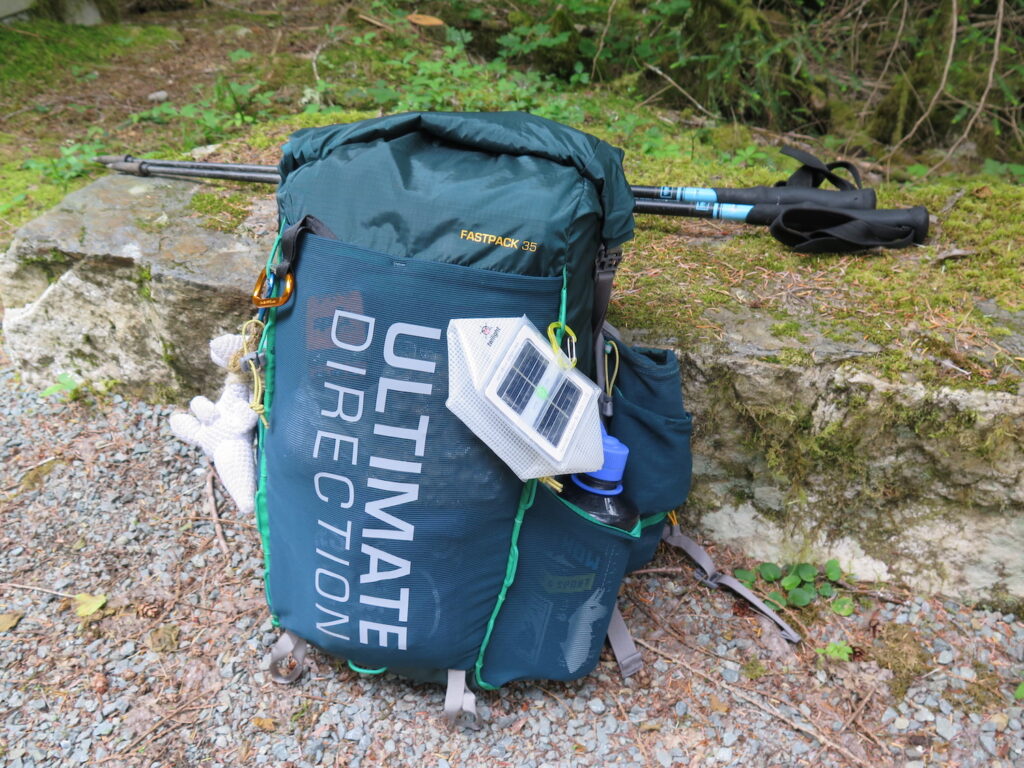
| Backpack | Ultimate Direction Fastpack 35 | 27 oz |
| Total | 1.68 lbs |
Sleep system.
I’m still using my old Big Agnes Fly Creek UL 2 and REI Flash sleeping bag from 2014. Big Agnes has since updated the design of the Fly Creek and REI sadly no longer sells the Flash. I wish they’d bring it back because it’s an unbelievably light, warm, hybrid synthetic/down bag that has held up very well for me over the years and didn’t break the bank. I use a super old OR ultralight compression sack that must be going on 10 years old now.
I listed out the weight of my entire tent setup with a fly below, but I hate rain flies and much prefer seeing the stars, feeling the breeze, and being able to look outside, even if it’s windy or cold. I only bring my fly when the weather forecast is iffy, which saves some space and weight. I also don’t pack a pillow but instead use my puffy either stuffed into a dry sack or folded.
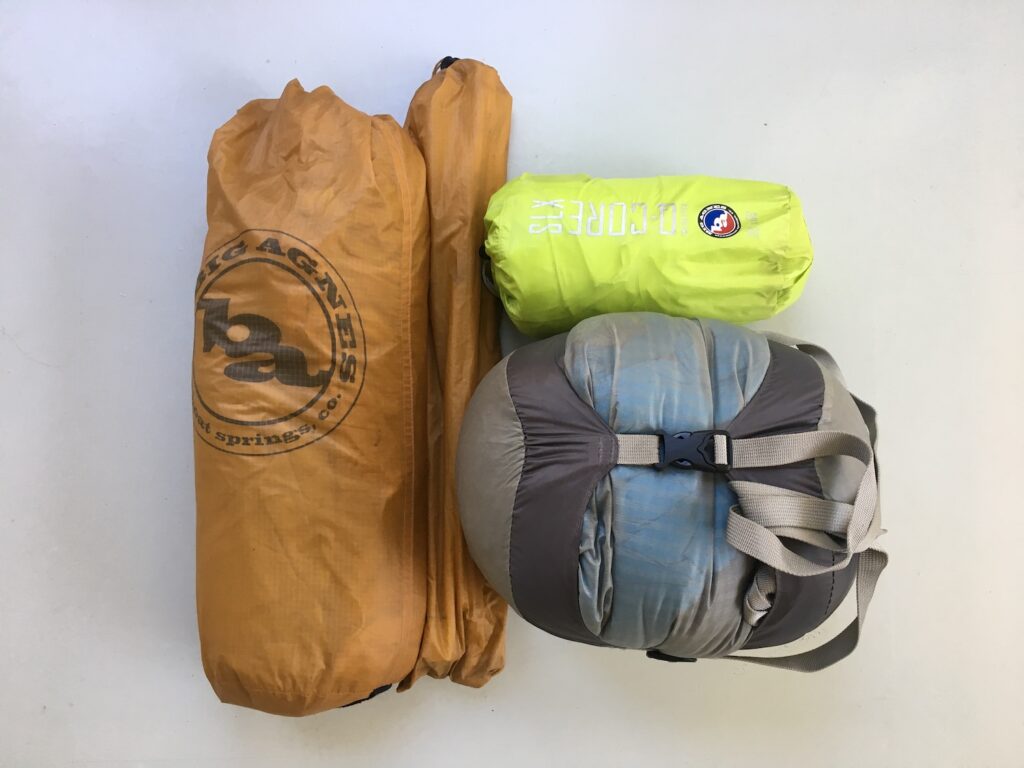
| Tent | Big Agnes Fly Creek UL 2 | 35.5 oz |
| Sleeping pad | Big Agnes Q-Core SLX sleeping pad | 17 oz |
| Sleeping bag | REI Flash sleeping bag | 28.5 oz |
| Stuff sack | OR Ultralight Compression Sack | 3.5 oz |
| Total | 5.3 lbs |
Packed clothing.
When hiking, I typically wear a single tank and a lightweight button down long-sleeve shirt for sun protection. When not needed, I stuff it into my exterior pack pocket, but I don’t add it into my base weight since usually, I’m wearing it. During summer I wear my favorite hiking shorts, a pair of dorky Nike Tempo running shorts I snagged for $8 on clearance at Target. Winning! In cooler weather I hike in a pair of REI’s Screeline hiking pants.
On pretty much every trip, regardless of the weather, these are the base clothes I pack. And yes, I always bring a pair of ridiculous OR Transcendent Mitts because I have a long history of suffering from painfully cold hands in even marginally cold weather. They’re a 3.5 oz safety item I just won’t leave behind and they compress so small they take up little space. I’m all about happy feet, so I bring a pair of camp socks I use only for camp (and sleeping). I also love a cotton tee for sleeping and hanging out at camp. It feels good to get out of your backpacking clothes for a night!
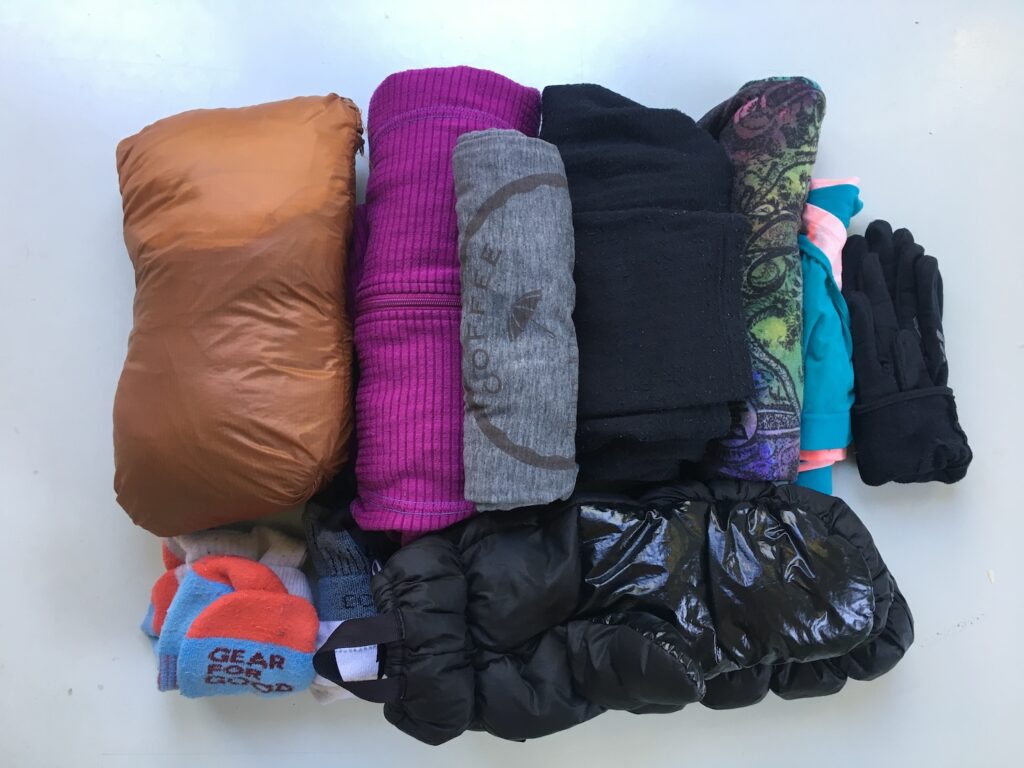
| Down jacket | MyTrail 850 Hyperlight Down Jacket | 7.5 oz |
| Thermal top | Terramar Thermal Half Zip | 7.5 oz |
| Thermal bottoms | Terramar Thermal Leggings | 5.5 oz |
| Socks | Wrightsock CoolMesh II Quarter Socks* | 1 oz |
| Light gloves | OR Vigor Lightweight Gloves | 1 oz |
| Warm gloves | OR Transcendent Mitts | 3.5 oz |
| Underwear | x 2 | 1 oz |
| Sleep tee | My old but very loved Tin Umbrella Coffee cotton tee | 2.5 oz |
| Camp socks | Cotopaxi Libre Socks | 2 oz |
| Headwear | Buff Polar | 2.5 oz |
| Total | 2.1 lbs |
*For trips over 2 days I’ll bring 2 pairs of spare socks. I like happy feet!
Cook kit.
I know many skimp on hot meals and sure, you can save some weight without a stove and fuel, but my cook kit is crazy light and I really enjoy a hot meal and coffee so it comes with me everywhere. Fuel canister weight typically falls under consumables and isn’t computed as part of base weight. Silly I think, since bringing a stove necessitates you bringing at least some amount of fuel. I’ll play by the “rules”.
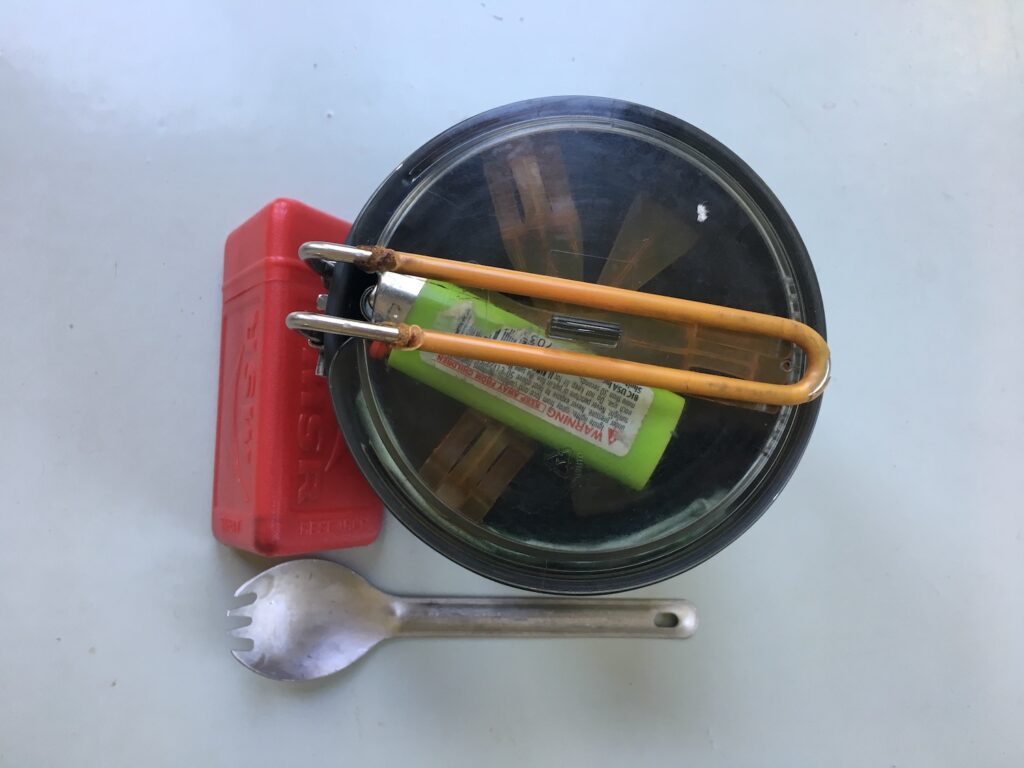
| Pot | GSI Pinnacle Soloist Cook Pot | 8 oz |
| Stove | MSR Pocket Rocket | 4 oz |
| Spork | Sea to Summit Titanium Spork | 0.5 oz |
| Lighter | Bic mini | 0.5 oz |
| Coffee filter | GSI Outdoors Ultralight Java Drip | 0.5 oz |
| Total | 0.84 lbs |
Water filter.
The one piece of gear I carry that receives the most opinionated feedback is my water filter. Everyone tells me to go lighter with a Sawyer Squeeze and ironically enough, I do have a Squeeze and use it for day hikes and trail running. For backpacking; however, there simply isn’t anything easier than this MSR gravity filter, especially when water sources are a hike, and you won’t ever wring this filter away from me!
I can scoop up 4-6L in my bag, carry it to camp, hang it, and spend my time doing other things while it filters. Meanwhile, my friends using the Squeeze are either laboring while I’m kicking back at camp or they’re forced to make constant trips back and forth to water.
I love having water at my disposal, conveniently at camp, which is important when you’re a water hog and you like morning coffee and hot meals! I’ve also been able to scoop up snow with this pack, hang it in the sun, and have fresh water without the boiling hassle. No where to hang? I hang it off my tent and I’ve even used my trekking pole rather creatively for a hang bag.
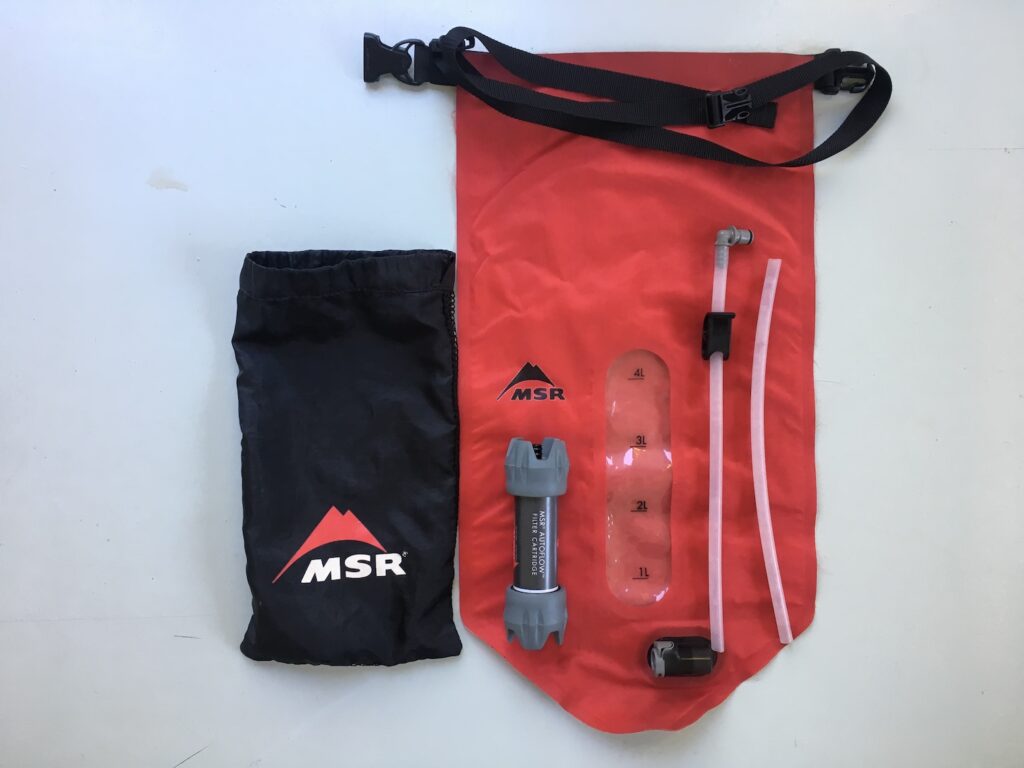
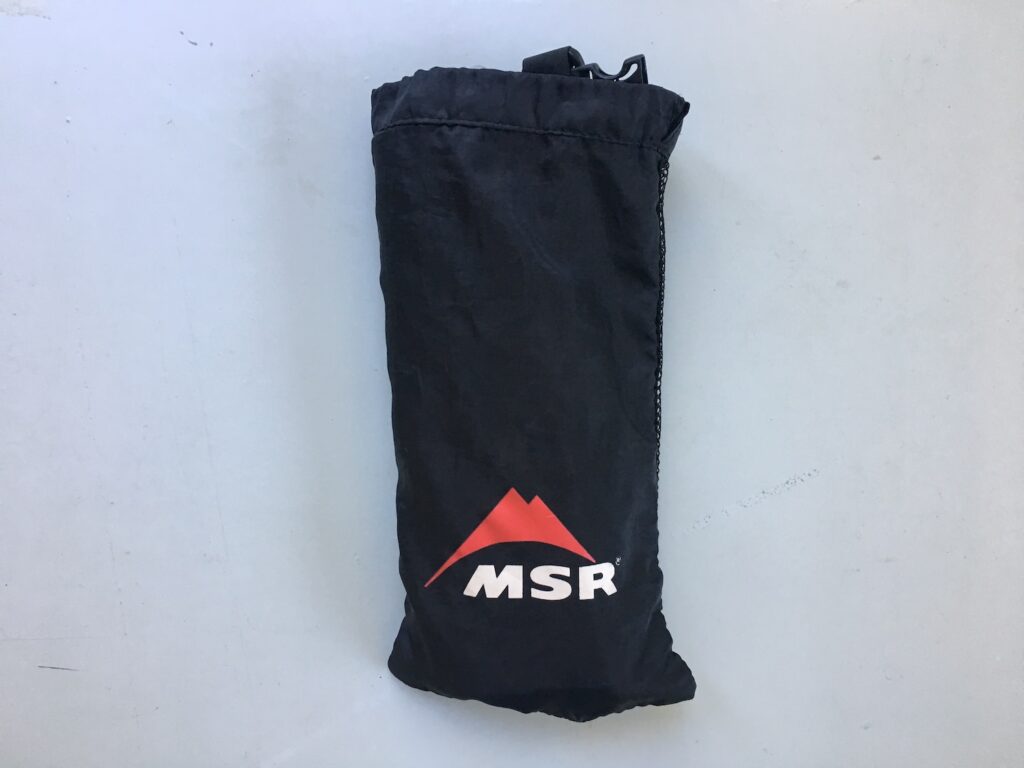
| Water filter | MSR AutoFlow Gravity Filter | 9.5 oz |
| Total | 0.6 lbs |
Miscellaneous Gear.
Most of my miscellaneous gear contains safety items like a headlamp, first aid kit, knife, emergency beacon, and backup solar light. I love bringing my lightweight Solight solar lantern since it provides a good way to extend the battery life for my Petzl headlamp and is great to use in the tent for reading and general ambient lighting. It also charges hanging just from my pack!
I tend not to bring a lot of toiletries and on 2-3 day trips, typically skip everything but a small vial of hand sanitizer and some toilet paper. My first aid kit has a few pieces of floss and Listerine chewable tabs that help refresh.
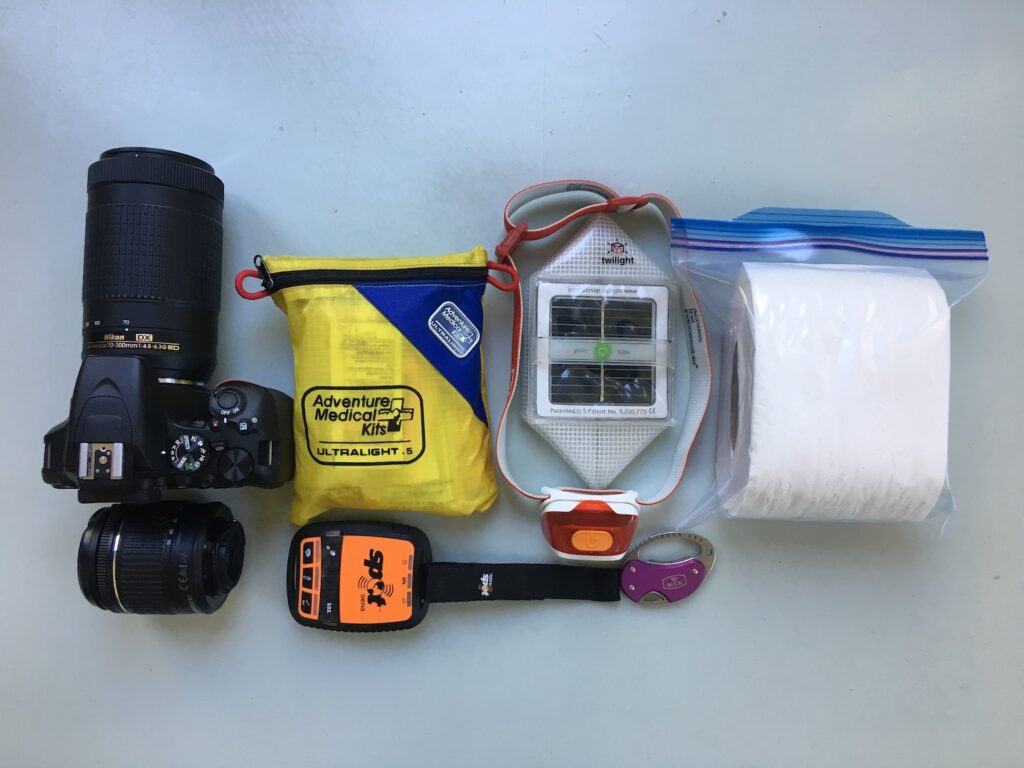
| First aid kit | Adventure Medical Kits .5* | 6.5 oz |
| Knife | Teeny tiny Buck USA knife/opener | 1.5 oz |
| Headlamp | Petzl Actik Core Headlamp | 3 oz |
| Backup light | Solight Twilight Solar Lantern | 2.5 oz |
| Emergency beacon | SPOT tracker | 4.5 oz |
| Toilet paper | Quarter role | 1 oz |
| Camera clip | Peak Designs Capture 3.0 Camera Clip | 2.5 oz |
| Phone | iPhone 6S | 6 oz |
| Total | 1.71 lbs |
*Though my base medical kit started from an ultralight Adventure Medical Kits that weighed 3.6 ounces, I’ve since added a few items to it including an emergency bivy, extra car key, firestarter, Kinesio tape, floss and Listerine tabs.
Total Base Weight: 12.2 lbs
So far, the items above all come out to a total of 195.55 oz, which is approximately 12.22 pounds. This certainly doesn’t win a badge for hyperlight or even ultralight, but it also didn’t completely break my bank account. I’m still using a lot of older gear and my big ticket items were really my tent, sleeping bag, pad, and pack, which is pretty typical.
It also highlights what I think makes all this base weight stuff a bit silly. Sure, a low base weight means a lighter pack and is a good thing to focus on, but there are some very important things missing like water, fuel, and food! Yep, it’s variable, but what matters to me is the total weight my body has to carry.
I mention above that I did a single overnight to Miner’s with 15 pounds. How did I do that? Well, that trip had such favorable weather that I left my tent fly and thermal layers, saving weight, so with my barely full fuel canister, water, and food, I topped out around 15 pounds.
Luxury item.
And here’s where I blow that awesome lightweight setup out of the water, I tote around my new Nikon camera and 300mm zoom lens. Yep, I can hear backpacking purists dying inside right now. “Noooooo!!! Bring a point and shoot!”.
I just can’t help it. I visit so many stunningly beautiful places with incredible wildlife that the photos have more than made up for that extra weight. If I really want to lighten up, I can take my old point and shoot, but this Nikon has been incredible. I won’t leave home without it.
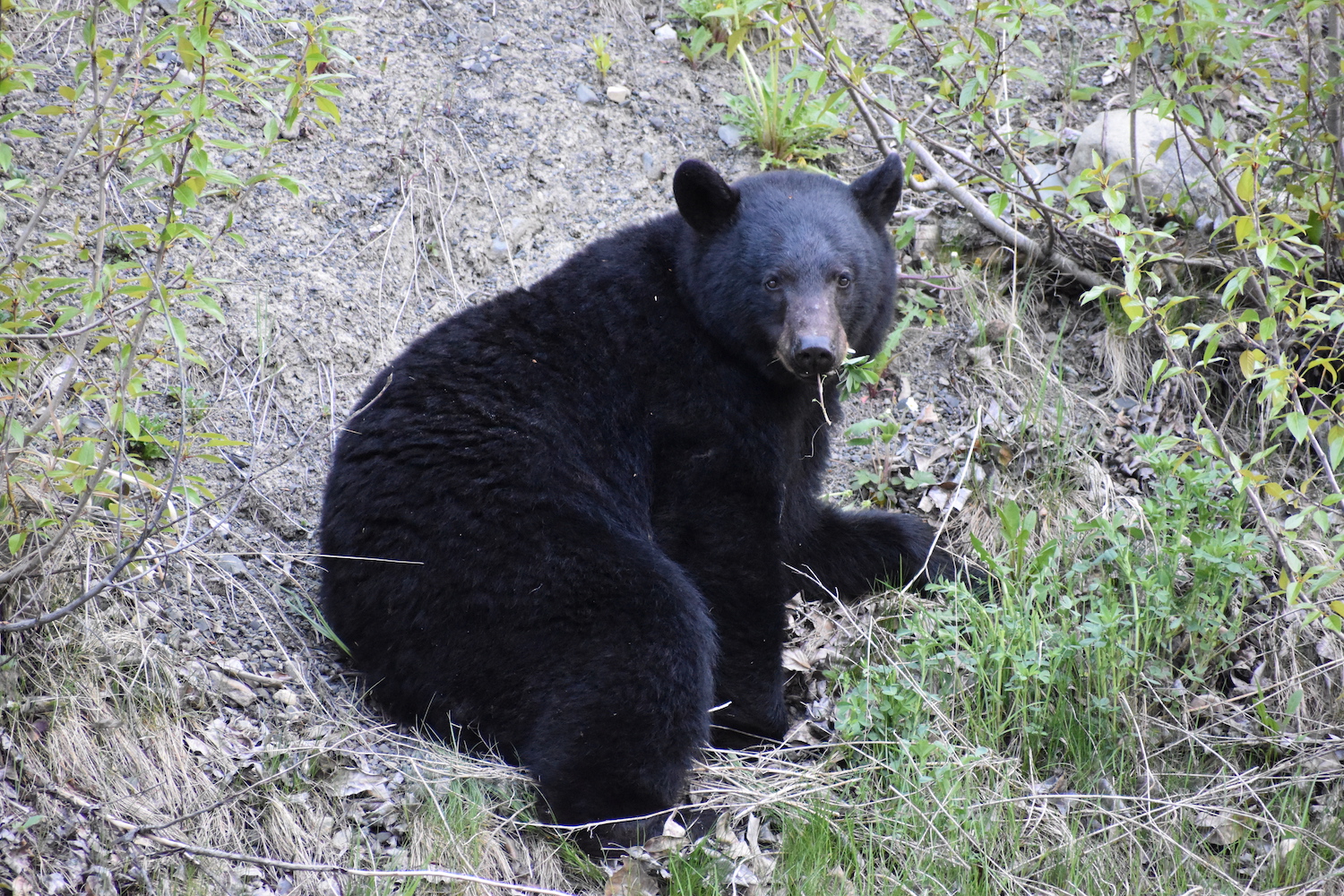
| Camera + Lens | Nikon D3500 with 18-55mm and 70-300mm lenses | 36.8 oz |
| Total | 2.3 lbs |
Food and consumables.
I’ve generally heard that 2 pounds of food per day is a rule of thumb. Don’t let my small size fool you, I eat a lot and I’ve been able to get by with about 1.5 pounds or so of food per day when I make smart choices.
Most of my backpacking snacks consist of Bobo bars, PROBAR meal bars, Macadamia nuts, string cheese, banana chips, and Epic meat bars, typically bacon! They pack some healthy calories, are generally lightweight, and have enough variety I don’t get bored.
For breakfast, I rotate between Mountain House’s breakfast skillet, the bars above, and oatmeal. For lunch, I do a wide variety of options including snacks, ramen, couscous, or tuna and salmon. Sometimes I’ve also packed tortillas and bagels with banana chips and nutella. For dinner? I’m pretty simple. No matter how many times I have it, I never tire of Mountain House’s Beef Stroganoff. I could eat it 20 days in a row. Is it the healthiest? Maybe not, but darn it, it is the absolute best, easiest, most satisfying meal I can have after a long day of backpacking! Yep, it’s my favorite!
I usually find that 4 oz fuel canisters do fine for trips up to 3-4 days, but in consideration of waste, I usually buy the 8 oz canisters and have a collection in varying degrees of fullness.
| Food | Assortment above | 24 oz x days (1.5 lbs x days) |
| Fuel | MSR Isopro Fuel Canister (4 oz) | 7.4 oz |
| Water | 1 liter of water + Nalgene | 41 oz |
| Total | 48.4 oz + 24 oz / day |
Total base weight +
How’s your math? So now with my base weight + luxury item + water + fuel + food (let’s say for 3 days): 195.55 oz + 36.8 oz + 41 oz + 7.4 oz + 72 oz = 352.75 oz (22.04 lbs)!
So how did I hit 20 pounds for my 3-day/2-night Glacier Peak trip? Well, I made some non-luxury food decisions, averaging a bit less than 1.5lbs/day and again, left my rain fly. It’s sort of amazing how a few ounces here and there lead up to a few pounds.
Situational extras.
Sometimes, trips require a bear canister and bear spray. I almost always bring both unless I can luck out with camping in an area that allows proper hanging of bear bags or has bear lockers.
In rainy weather, I pack a thin rain shell and pants. OR’s Helium is about as light as you can get with a rain layer. I love OR, but their Helium isn’t my favorite jacket, so I only bring it when I need a lightweight option. I also have an old lightweight pair of rain pants I use for winter scooting.
In colder weather, I’ll bring an extra thermal top and fleecy leg warmers. Sometimes I even splurge on the luxury front and bring my Therm-a-Rest Z-seat!
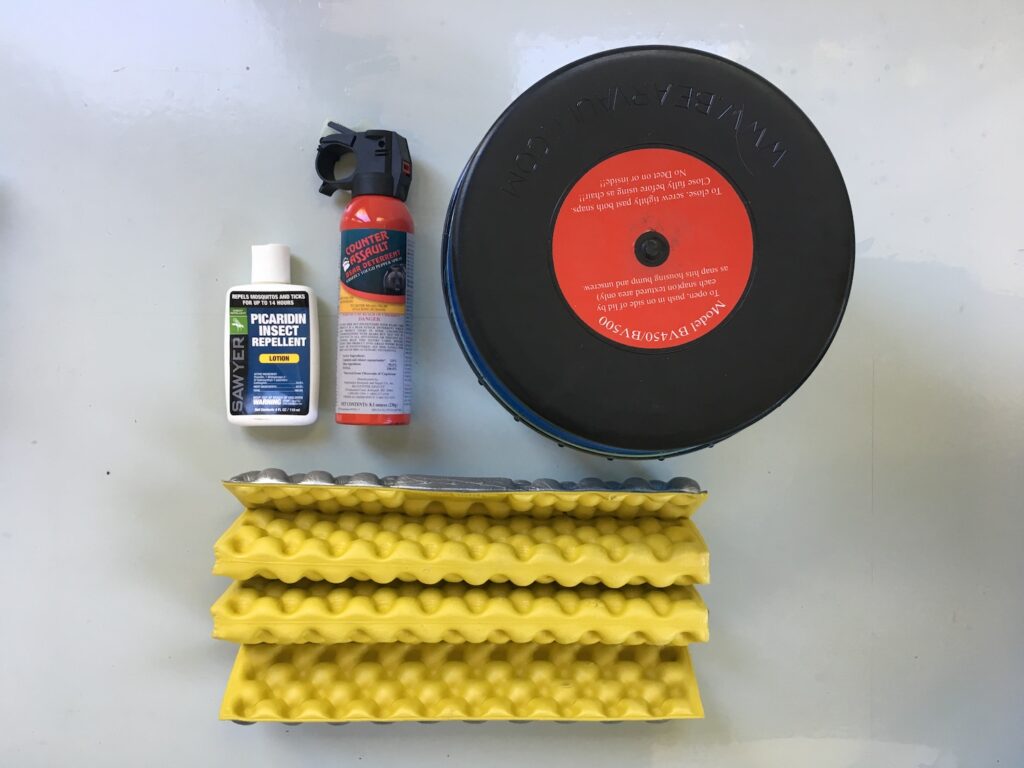
| Bear Spray | Counter Assault Bear Deterrent | 10.5 oz |
| Bear Canister | BearVault 450 | 33 oz |
| Rain jacket | Outdoor Research Helium II | 5 oz |
| Rain pants | Sierra Designs Rain Shell (no longer made) | 6.5 oz |
| Fleece top layer | Super old Duofold thermal tee | 7 oz |
| Fleece bottom layer | Acorn thermal leg warmers (the bomb!) | 3 oz |
| Bum seat | Therm-a-Rest Z-Seat Pad | 2 oz |
Conclusion.
The weight game when it comes to backpacking is interesting to play. I think the most important thing is to carry the weight and gear that make the most sense for you. My body seems to be doing pretty well with the 20 pound range and I’ve been able to get there without making a ton of sacrifices to my enjoyment or pocket book.
I also keep it simple. I bring my phone with a backup map, but keep it powered off and use paper maps so I don’t need chargers, cables, and other electronics that add up weight fast.
Although it’s time consuming, it’s interesting to stockpile all your gear, weigh it, and think about what you’re bringing on the trail. Even now looking at this list I know there are things I will never part with, like my beloved MSR gravity filter, but there are other things I could perhaps upgrade. I’ll never win a hyperlight award, but at the end of the day, if my award means happy, healthy joints and a comfortable, safe time in the backcountry, that’s winning for me!
